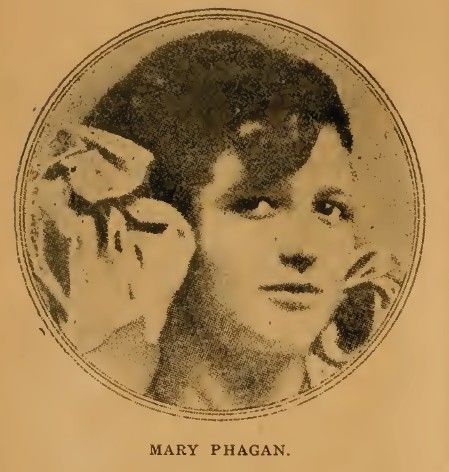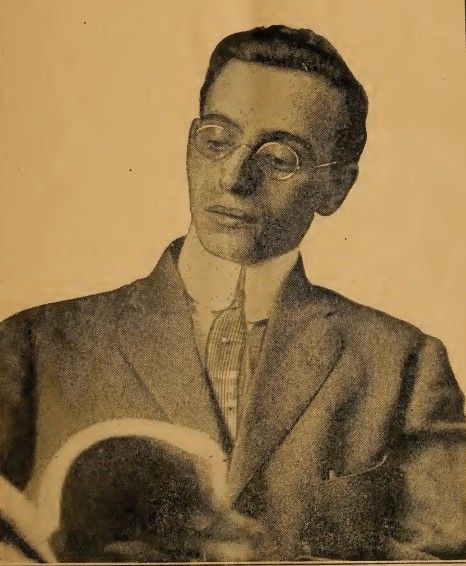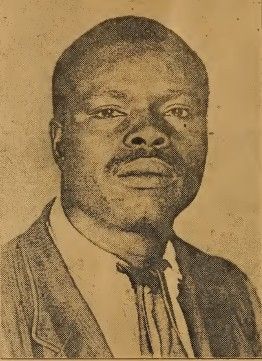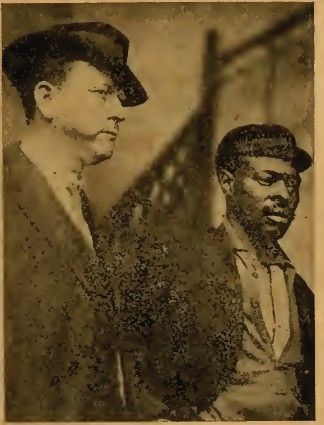
A scan from Tom Watson’s magazine: Mary Phagan, raped and murdered by Leo Frank on April 26, 1913.
The death of Trayvon Martin and the apparent reluctance of the police to file charges against his acknowledged killer has reignited the perennial debate regarding blacks and justice in the Deep South. In fact, this question was answered 99 years ago.

A scan from Tom Watson’s magazine: Mary Phagan, raped and murdered by Leo Frank on April 26, 1913.
We’ve all heard it, heck, we’ve had it drummed into us time and time and time again, the law is racist, along with the rest of white society and Heaven knows what else, but what does this claim mean? In the Trayvon Martin case, we are led to believe (by the usual suspects) that if Martin had been white and George Zimmerman black, things would have been handled differently. But is this really so?
Anyone who thinks justice in the US is racist should remember those two letters: O & J as in Simpson, but the America courts, including in the Deep South, proved way back in 1913 that the colour of a man’s skin is totally irrelevant when it dispenses justice. That doesn’t mean that justice is always done; there are plenty of men and not a few women on both sides of the Atlantic and indeed the world over who have been convicted of crimes they didn’t commit, or even of crimes that didn’t happen. Ninety-nine years ago today, a young girl was murdered in Atlanta, Georgia, and the resulting legal proceedings affirmed for all time that a black man could indeed get a fair hearing in the Deep South. That hasn’t though deterred certain people and organisations from exploiting the resulting trial and conviction to promote their own political and racial agendas.
Mary Phagan was a young girl who was employed in a pencil factory. There is some uncertainty about her precise age, but her date of birth is usually given as June 1, 1899, making her 13 years old at the time of her death. She left school at the age of 10, and worked long hours for next to nothing. This is something many blacks forget, especially those who harp on about reparations. For most of human history, not a few men, most women and a great many children were regarded and treated as little more than slaves.
Slavery may have been abolished in the British Empire in 1834 and the United States by 1865, but in England, an 1835 survey revealed that there were 28,000 children under the age of 13 working in cotton mills and 4,000 in worsted factories. Young boys continued to be shoved up chimneys until well after the abolition of slavery. The last fatality in this disgusting profession was 1875. In 1863, in his testimony to the Children’s Employment Commission, Thomas Clarke “master-sweep of Nottingham” said of this so-called apprenticeship that it was “as bad as the Negro slavery, only it is not so known”.
It is clear from the tale of Mary Phagan that her life would be considered little more than slavery by today’s standards, but it was cut tragically short when her body was found in the basement of the factory where she worked. She had been strangled, and appeared to have been raped.
The gruesome discovery was made by Newt Lee, a Negro, and the night watchman. Lee fell under immediate suspicion, and his boss did everything in his power to exacerbate that suspicion.
Leo M. Frank was the superintendent and part owner of the Atlanta Pencil Company, and the last person confirmed to have seen her alive. Frank was a married man, and on the face of it a pillar of the community, but eventually suspicion would turn to him, with good reason.
Besides Newt Lee, there was another immediate suspect, a white man named Arthur Mullinax. At one point, a mob of good ole’ boys threatened to lynch Lee, and when a bloody shirt was found at his residence, things began to look black for him. Lee claimed the blood was his own from an injury, something that would be very easy to confirm one way or the other today, but although he was cleared of all involvement in the crime, he may not have been telling the truth about the blood on the shirt.
Two more men came under suspicion but Newt Lee was still the prime suspect. This might just have been because of two utterly bizarre notes that were found at the crime scene. These purported to have been written by the victim, and indicated that Lee was molesting or had tried to molest her. They were written in bad English, and it was inconceivable they could actually have been written by Mary herself.
On April 29, Leo Frank was arrested, and on May 1, after the release of Mullinax and another now former suspect, Jim Conley was arrested, having been seen rinsing out a soiled shirt. Like Lee, Conley was a Negro, and worked as a sweeper at the factory. He appeared to be a confidant of Frank, or even to have a bizarre relationship with him.
It didn’t take long for the police to realise that Conley was the author of the two bizarre notes, and that would surely have been enough to put a rope around his neck, but they conducted a thorough investigation, and under questioning, Conley told a bizarre tale indeed.
After lying repeatedly to the police, Conley admitted that he had written the notes but claimed he had done so at the behest of Leo Frank. Although Conley was far from the only witness against Frank, his evidence was crucial to a successful prosecution. The trial ended with Frank’s conviction and a death sentence, although it was what happened afterwards that caused most controversy, and does to this day. Georgia Governor John M. Slaton commuted Frank’s death sentence to life imprisonment, and on August 17, 1915, after surviving a murder attempt by another inmate, Leo Frank was kidnapped from the prison at Milledgeville where he was being held, driven to Marietta, and hung from a tree. The lynching was carried out by a group of prominent citizens, who posed quite openly for a photograph to display their handiwork to the world.

A scan from Tom Watson’s magazine: a studious looking Leo Frank. His conviction for the murder of Mary Phagan was upheld on appeal.
This and the fact that Frank was a Northerner and more specifically a Jew has been used by powerful agenda driven special interest groups as a big stick with which to batter the Deep South ever since. Indeed, the lynching led, unfortunately, to the founding of the ADL, an organisation that finds racial bigotry everywhere it looks. Except in Israel.
Incredibly, the even handed and fair minded treatment of Jim Conley by the legal authorities is held up as proof positive of a deep seated racial bigotry in the Deep South in particular and the United States more generally. Even more incredibly, many black academics have swallowed this nonsense. The fact that the police and prosecutors accepted his story is explained away. Apparently, Conley was believed only because they thought no black man could be intelligent enough to fabricate such an outrageous tale, though by the same token we are supposed to believe he was evil enough to rape and strangle a young white girl, then blame the crime on his boss, and plausible enough to lie convincingly under oath and indeed while being subjected to a gruelling third degree by apparently so bigoted detectives under pressure to solve an heinous crime. Indeed, no one connected with this case accused the police of abusing much less torturing or framing either Newt Lee or Jim Conley, nor of attempting to do so. Who’s being racist now?
The claim or more often the inference that the system was out to get Frank because he was a Jew is even more contemptible. This is in effect a claim that blacks were perceived as being higher up the food chain than Jews, a claim that is so absurd it is laughable. In 1913, there were still blacks alive who could remember slavery, even some who had actually been born into it. Society in the Deep South was so segregated that Conley and Frank would not have even been permitted to use the same restrooms, indeed, Newt Lee found Mary Phagan’s body when he went down to the basement to use the Negro toilet.
Without question, the best and most thorough contemporaneous analysis was made by Tom Watson and published in his magazine. Watson is another man who has had his reputation blackened unfairly by those who refuse to concede that the jury and appellate courts may just have got it right in this case. His excellent analysis can be found here, but a few points are worth noting.
No less than eleven white girls testified to Frank’s lewd conduct. There was also testimony as to his having sexual relations with one Daisy Hopkins – alluded to here as sodomy. Initially, Frank attempted to frame Newt Lee by doctoring Lee’s time slip. It was because of Frank that Lee’s premises was searched, which led to the police finding his bloody shirt. (The obvious implication from this is that Frank planted the shirt).
Amusingly, Watson says of this shirt that “there was no African odor on it”. Nowadays, it is considered politically incorrect – to put it mildly – even to mention the fact that different races emit different odours, but Watson noted every minute detail of this case. If Frank did plant this bloodstained shirt – as seems probable – that means Lee must have lied about the blood being his. Probably he thought the police were trying to frame him, but fortunately he didn’t allow himself to be coerced into making a false confession, as many supposedly far more intelligent and capable men have done, like the Norfolk 4.
Another important point is that when Conley broke down and confessed to his part in covering up the crime, he asked to be taken to Frank so that the two could be heard to talk about it, but as Watson points out, Frank, the Cornell graduate, “shrinks from meeting the ignorant negro, in the presence of witnesses...The white man is afraid to face the black, who accuses him of the most heinous crime ever perpetrated in the South...the innocent martyr dared not confront a guilty negro—a low-down. drunken brute, they call him—because Rosser was not present, to prevent the black brute from getting the better of the educated white gentleman...” [verbatim – Luther Rosser was Frank’s trial attorney].
Another thing worth pointing out here is that all the racial bigotry in his case came from the defense, indeed it may have been the abuse heaped on Conley alienated a jury of upstanding, God-fearing white men. Conley spent 16 hours on the stand, eight hours testifying, and eight hours under cross-examination by one of the finest criminal attorneys in Georgia if not the United States, and the consensus was that he had not been shaken. That could mean he was incredibly devious if not psychopathic, or it could mean that however improbable his tale, it was the gospel truth.
Every day someone somewhere in the world tells a court an implausible story that turns out to be true, and by the same token, many plausible ones turn out to be tissues of lies. What was the reaction of the Australian legal authorities when Lindy Chamberlain claimed her baby had been kidnapped and killed by a wild dingo?
While that incredibly implausible story turned out to be true, an apparently plausible one turned out to be anything but. In 1985, Jeremy Bamber murdered five members of his family, and staged the crime scene to make it appear that his sister Sheila had murdered their parents, and her own sons before turning the gun on herself. Initially, the police did not make a thorough investigation, but the discovery of a bloodstained silencer by the extended family of the victims, and a proper reinvestigation led to Bamber’s conviction.
Returning to this bizarre tale, Tom Watson gives the following facts about Jim Conley:
He had never had trouble with white people. In 1904 he was fined $1.75, the result of an altercation with another Negro, the same in 1905, and in 1906 he was fined $3.75. In 1907, he had two such run ins which cost him $26 – not a small sum in those days even for the average white man. In 1912, he was sentenced to 30 days in prison. In other words, there was nothing of substance against him, “and you may be sure they left no stone unturned ”.
Among other things, Watson asks the rhetorical question: “Did any black assailant of a white woman ever go looking for a cord when his fingers were already on her throat? Never!”
That is a fair point. Some of the strongest evidence against Frank though is the way this supposedly so brutal almost subhuman Negro behaved afterwards. After serving a year on a chain gang for covering up the crime, Jim Conley went back to eking out an existence as best a low class black man and former convict could in America at that time.

A scan from Tom Watson’s magazine: Jim Conley, the man cleared by the law but blamed by history for the murder of Mary Phagan. Leo Frank’s lawyer as good as branded him subhuman, yet after his release from prison for aiding Frank, no woman of any race ever accused him of impropriety until his death in 1962.
According to the Leo Frank apologist Leonard Dinnerstein, Jim Conley died in 1962. In 1919, he received a heavy sentence after being shot while trying to burglarise an Atlanta drug store; in 1941 he was among a group picked up by the Atlanta police for gambling (victimless crime), and in 1947 he was again arrested, on a charge of drunkenness – a crime against himself more than anything else, or perhaps like the great unwashed of all ages, places and races, drunkenness provided him with a happy release from the drudgery and at times outright misery that was his life.
What is missing from this equation? How about any mention of sexual impropriety? It is well known – as any police officer will tell you – that a man who commits a crime of this nature has probably committed a sexual crime before, indeed it is most likely he has a pattern of such offending. Whether or not he has already been convicted of a sex crime, he will probably not stop until he is either caught or in rare cases committed suicide. Even highly intelligent, devious sexual predators with far more resources than Conley continue down this fateful path, including those who genuinely want to stop. Like the scorpion, they will sting, even if it leads inevitably to their own deaths, because it is in their nature.
Yet for all his sins, no white woman, indeed no woman or girl of any race ever pointed an accusing finger at Jim Conley and said: “That man interfered with me”, “That man propositioned me”, or even “That man leered at me”. We can be certain of this because if Conley had transgressed in any way, manner, shape or form, the amen corner for Leo Frank would have shouted it from the rooftops and rubbed the nose of Georgian justice in it ever since, but not only did Conley never threaten a woman, the supposedly so bigoted people of the Deep South never attempted to lynch him or to extract any form of summary justice, which speaks volumes both for the innocence of Conley/guilt of Frank and for the so-called bigots, rednecks and racists who certain people would have us believe make up the bulk of the white population below the Mason-Dixon Line.
There is another reason we should discount Conley as the killer; in the Deep South of 1913, the likes of Jim Conley knew their place, and he would have realised that if he so much as looked at a white girl the wrong way, even a girl of Mary Phagan’s humble estate, he would have paid a heavy price indeed. The evidence indicates that the murder of Mary Phagan was a sex crime, and is consistent with Frank attempting to have his way with her, her resisting, and him strangling her in anger. There being no way to dispose of the body, and no way to conceal his contact with her, he came up with this ludicrous plot to implicate Newt Lee, or perhaps someone else, and nearly carried it off.
There is now a website devoted solely to the Leo Frank case, a truly magnificent resource: The 1913 Leo Frank Case and Trial Research Library.
Whatever position anyone holds on the conviction of Leo Frank, no jurist of reason could claim either that he didn’t have his day in court, or that Jim Conley, a low class Negro of far from exemplary character and with a liking for drink, was dealt with fairly by the courts, as was Newt Lee.

A scan from Tom Watson’s magazine: Newt Lee with a detective on his way to court, not as an accused but as a prosecution witness against Leo Frank, his boss, and the man who tried to frame him for the murder of Mary Phagan. Like Jim Conley, Lee is proof that justice in the Deep South could treat the Negro fairly, even though most blacks were second or even third class citizens.
This does not of course mean there will never be a miscarriage of justice anywhere at any time. When these happen, they can be truly terrible, as in the case of Thomas Haynesworth, or that of Adolf Beck way back in at the turn of the 20th Century, both of which resulted from honest but spectacularly wrong eyewitness identifications.
On the other side, there will be guilty men who walk free from court after committing heinous crimes, though nowhere near as many as Pips Taylor and her ilk would have us believe. Justice is imperfect everywhere, but the suggestion that American justice is anything but colour blind 99 years after the trial of Leo Frank is an insult unworthy of even a reply.
In 1996, Samuel L. Jackson starred in A Time To Kill, a film that took a broadside at the supposedly deeply entrenched bigotry of the people of Mississippi. His young daughter is raped by two lowlife rednecks, and fearful they will be acquitted, he decides to act as judge, jury and executioner himself. The truth is that, certainly in the old Deep South, two white men who raped a ten year old girl then boasted about it would have suffered the same fate as Leo Frank, regardless of the race of the victim. Nowadays we reject lynch mob justice – as we ought – but it was certainly effective. In Saudi Arabia today, executions are carried out in public – after due process of law – and sentences for most crimes are incredibly harsh by Western standards, which is undoubtedly why the crime rate is so low.
Justice should be colour blind – as it is and always has been in the Deep South – but it should not be dumb as well, and neither should people who attempt to portray it as such.
[The above article was published originally April 26, 2012. Not that it matters but the Atlanta Pencil Company was actually called the National Pencil Company, established 1908.]
Back To Digital Journal Index